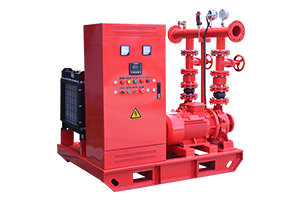How to Safely Shut Down a Fire Pump?
Dec 03, 2024
Share:
Safely shutting down a fire pump requires careful attention to ensure both personnel safety and proper functioning of the system during the next use. Here are the steps to follow:

1. Verify System Conditions
- Ensure Safety: Confirm no emergency conditions require the pump to stay operational. Verify with the fire alarm or building management system.
- Notify Personnel: Inform relevant personnel that the fire pump will be shut down.
2. Turn Off the Pump
- Electric Fire Pumps:
- Control Panel: Use the stop button on the pump's control panel.
- Main Power: If required, switch off the main power supply after confirming the pump is stopped.
- Diesel Fire Pumps:
- Control Panel: Use the stop control for diesel engines.
- Manual Shutdown: Follow the manufacturer's procedure to turn off the engine safely.
3. Close Valves
- Close the pump's discharge valve to prevent backflow or pressure surges.
- Close suction valves if needed, ensuring no water is drawn into the system.
4. Drain the Pump (if necessary)
- If the pump is being shut down for maintenance or in freezing conditions:
- Open drain plugs or valves to remove water from the pump casing.
- Avoid leaving water in the pump to prevent freezing or corrosion.
5. Inspect and Record
- Inspect the pump and system for any abnormal conditions or leaks.
- Record the shutdown in the system log, noting the time, date, and reason for shutdown.
6. Switch to Auto Mode (if applicable)
- For systems with automatic settings, ensure the controller is set back to "Auto" after servicing or inspections.
7. Perform Post-Shutdown Maintenance
- If the shutdown is for maintenance:
- Clean the pump.
- Lubricate moving parts.
- Check seals, couplings, and electrical connections.
8. Confirm System Readiness
- Once work is complete, ensure the pump is ready for reactivation, especially if the system is for fire protection.
- Conduct tests as per NFPA 20 standards to verify functionality.






